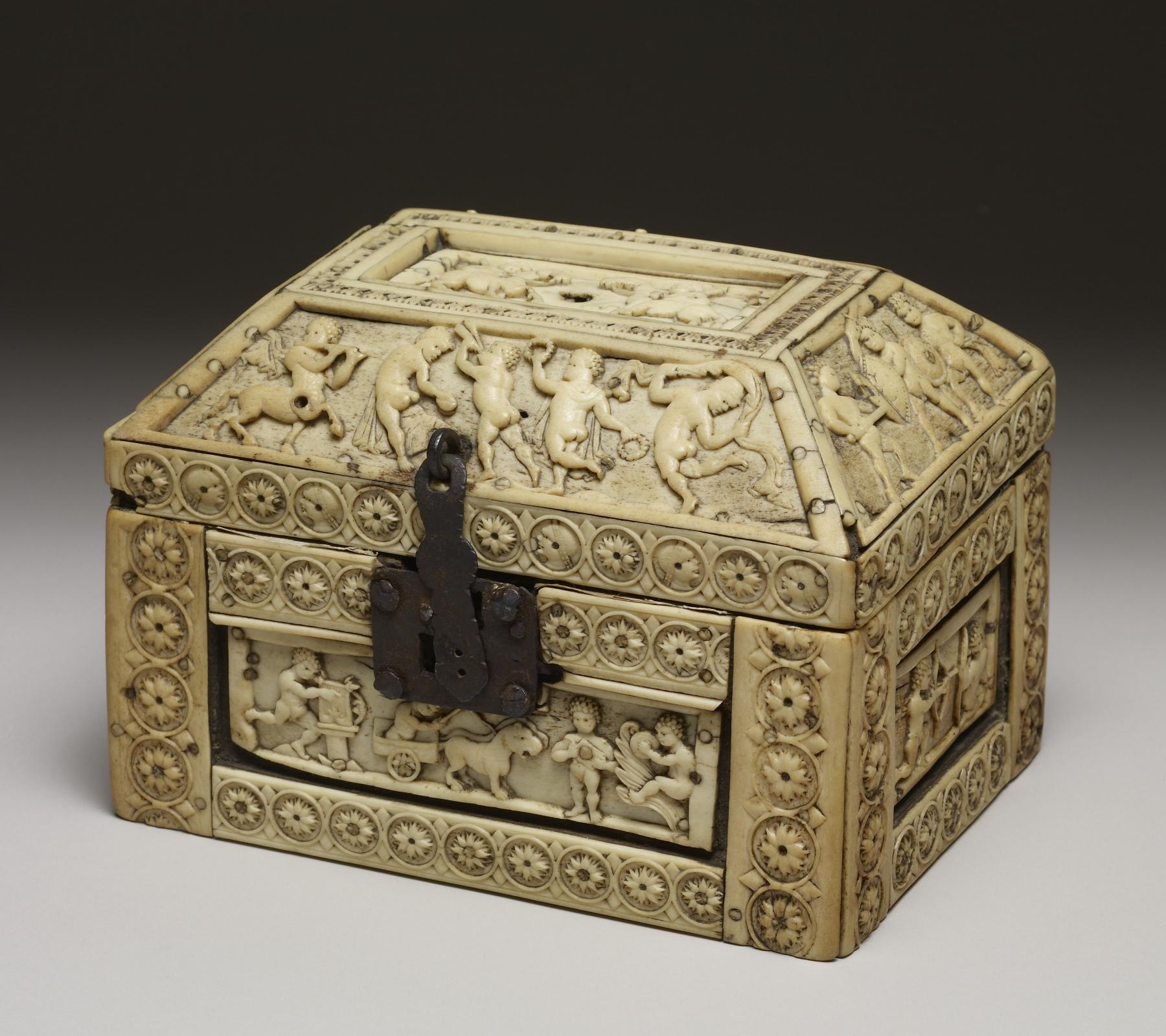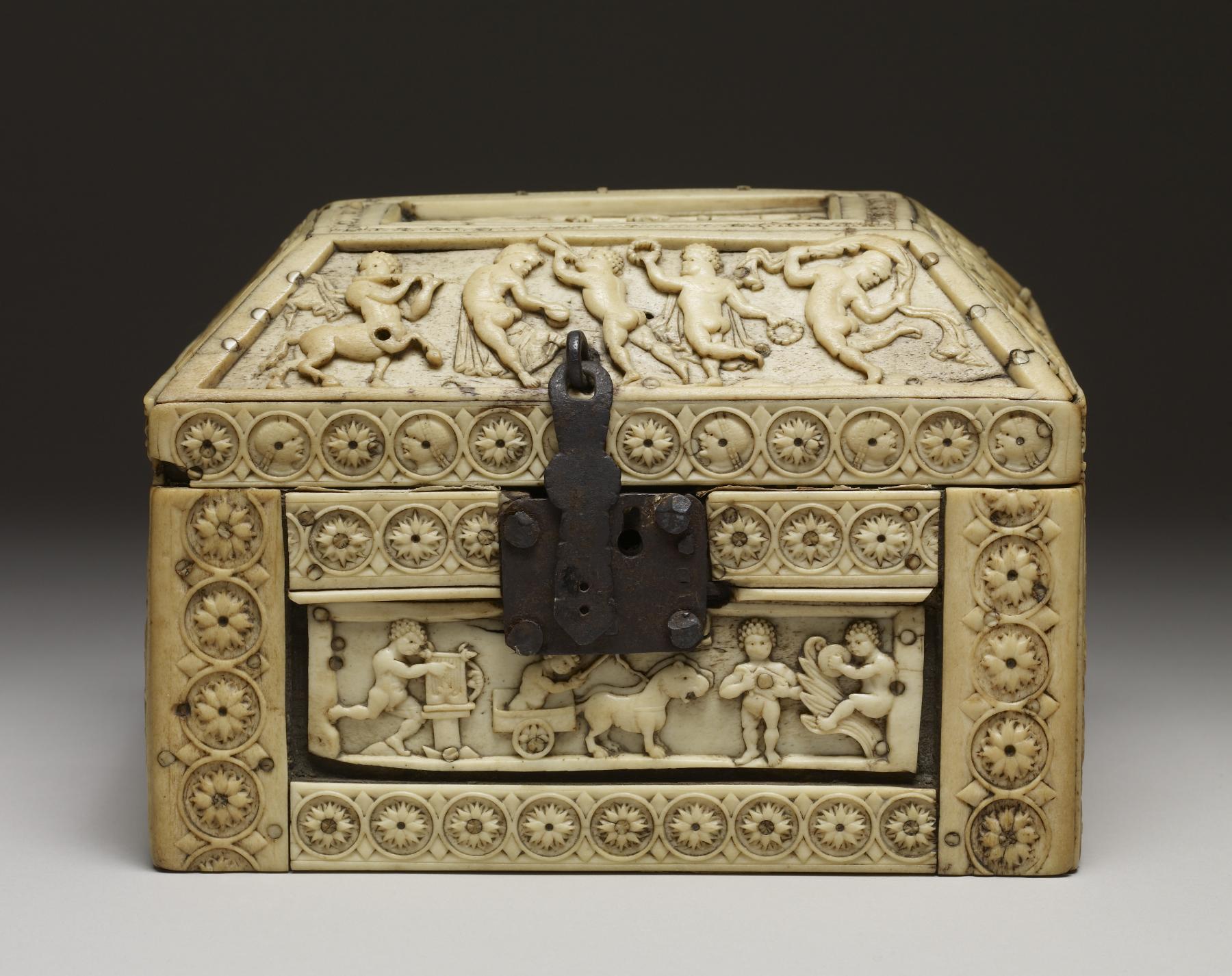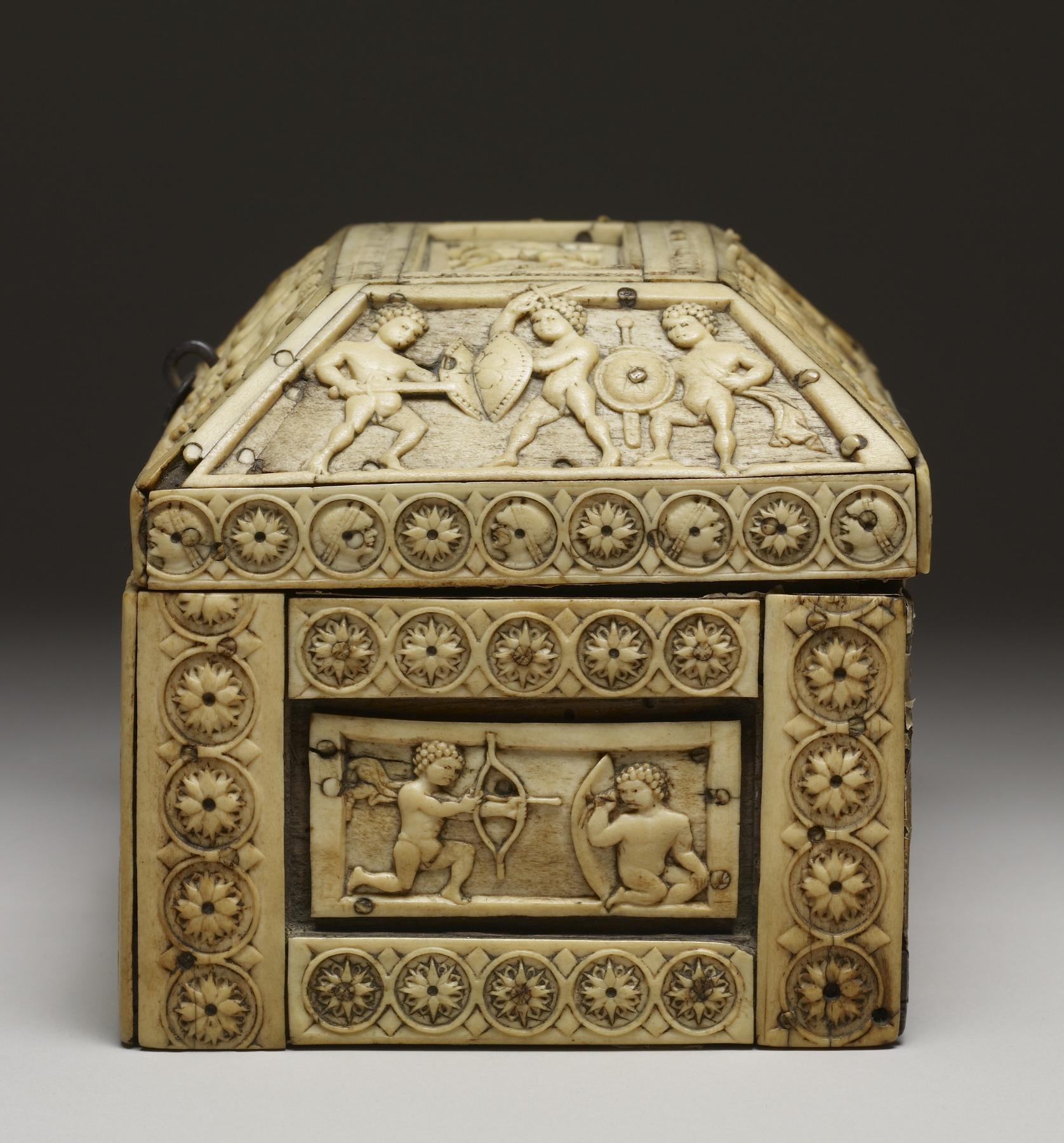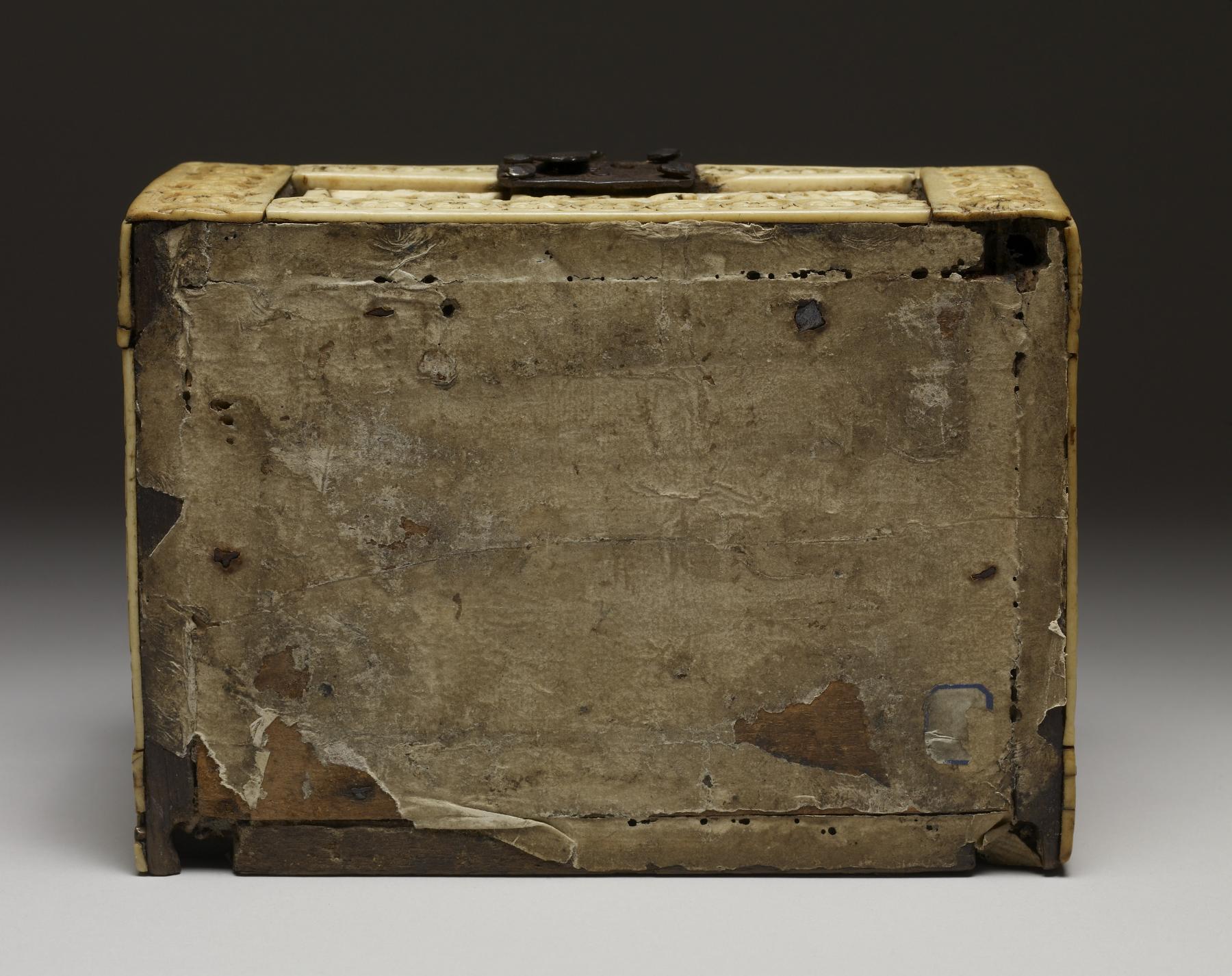Casket with Images of Cupids
(Byzantium and Early Russia)
This finely carved ivory casket is decorated with curly-haired "erotes" (cupids) in the guise of warriors, dancers, and musicians. The lid shows two in equestrian combat while the trapezoidal panel in front shows a group of four "erotes" and a centaur dancing and playing musical instruments. The rectangular plaque on the casket's front features an "eros" playing a harp on a stand, a chariot drawn by panthers, and two other "erotes" playing musical instruments.
Provenance
Provenance (from the French provenir, 'to come from/forth') is the chronology of the ownership, custody, or location of a historical object. Learn more about provenance at the Walters.
Bought in Italy; Edward Joseph, London, ca. 1888, by purchase; Sale, Christie's, London, May 6, 1890, no. 1003 and February 1894, no. 357; Isaac Falcke, London, 1894, by purchase; Sale, Christie's, London, April 19, 1910, no. 166; Jacques Seligmann, Paris, 1910, by purchase; Henry Walters, Baltimore, 1910, by purchase; Walters Art Museum, 1931, by bequest.
Exhibitions
| 2014 | Seeing Music in Medieval Manuscripts. The Walters Art Museum, Baltimore. |
| 1983-1984 | Ivory: The Sumptuous Art. The Walters Art Gallery, Baltimore. |
| 1984 | The Taste of Maryland: Art Collecting in Maryland 1800-1934. The Walters Art Gallery, Baltimore. |
| 1947 | Early Christian and Byzantine Art. Baltimore Museum of Art, Baltimore. |
Geographies
Turkey, Istanbul (Constantinople) (Place of Origin)
Measurements
H: 4 15/16 x W: 7 5/16 x D: 5 5/16 in. (12.6 x 18.5 x 13.5 cm)
Credit Line
Acquired by Henry Walters, 1910
Location in Museum
Centre Street: Third Floor: Byzantine, Russian, and Ethiopian Icons
Accession Number
In libraries, galleries, museums, and archives, an accession number is a unique identifier assigned to each object in the collection.
In libraries, galleries, museums, and archives, an accession number is a unique identifier assigned to each object in the collection.
71.298














